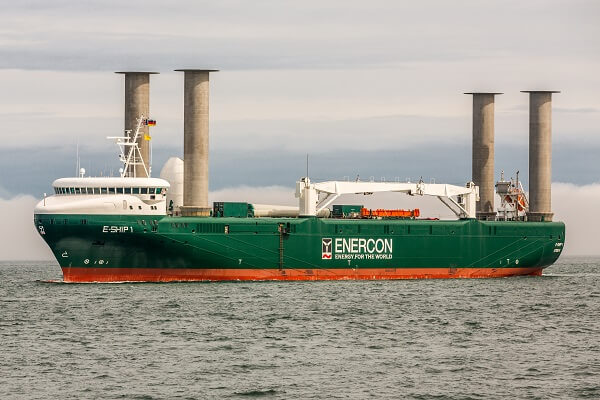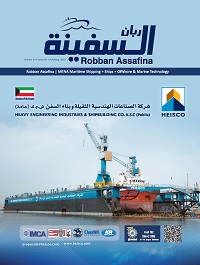Ballast Water Treatment systems: The Catalyst to a Better Marine Future
Prior to the 1880s, ships used solid ballast materials such as rocks and sand, which people had to shovel into and out of cargo holds, in order to maintain safe operating conditions throughout a voyage. Since the introduction of steel-hulled vessels, water has been used as ballast to stabilize vessels at sea and balance their weight during a voyage.
Ballast water is pumped in to reduce stress on the hull, provide transverse stability, improve propulsion and maneuverability, and compensate for weight changes in various cargo load levels, due to fuel and water consumption.
Although it is essential for the safety of the ship, ballast water risk introducing alien species, from small fish to microorganisms, into the water around the new area. However, proper management and treatment of ballast water significantly reduces this risk. With the new builds and retrofits, ballast water treatment systems BWTS are an essential step to help reduce biological contamination.
Under IMO’s “International Convention for the Control and Management of Ship’s Ballast Water and Sediments”, the implementation of a ballast water management plan and ballast water treatment system on board ships has thus become important.
In this issue, Robban Assafina covers the market trends of the ballast water treatment systems, installation procedures and their impact on the environment.
Types of BWTS
A variety of technologies are available on the market for treating ballast water on ships. However, constraints such as availability of space, cost of implementation, and level of environmental friendliness play an important role in the usage of a particular type of ballast water treatment system.
Although there are many types, the main ballast water treatment technologies available on the market are filtration systems, chemical disinfection and ultra-violet treatment.
Jiandong Shen, Founder and Chairman of Elite Marine Corporation, tells us about Seascape, an environmentally friendly, safe and economical combined system which takes advantage of filter and Enhanced Physical Treatment-UV/US unit. “It is a pure physical, smart, easy and economical maintenance system with small sized & compact design. The secondary filtration during de-ballast is the unique technical route of Elite which can ensure that ballast water meets the D-2 standard, on a 100% scale.” Shen explains that Seascape fits all vessel types and is suitable for high salinity seawater, brackish and fresh water, with a UV power adjustable according to water quality, with a saving energy consumption capacity.

Choice of Technology
Decisions in ballast water treatment shouldn’t be made by default, especially when it comes to the choice of treatment technology, UV or electrochlorination (EC), says Hisham Ali, Regional Director, Marine Division at Alfa Laval. “By raising the right questions, you can lower your costs and risks to your operating limitations. UV treatment with Alfa Laval PureBallast 3 is a safe and robust choice for ballast water treatment, even on vessels where EC is today’s norm. UV treatment minimizes system footprint and vessel modifications, limits shipyard time and investment cost, avoids costly, hazardous, and damaging chemicals and maximizes operating flexibility and efficiency.”
In ballast water treatment, the choice of technology not only affects investment cost, but also the vessel’s long-term operating costs and flexibility, according to Ali. “For example chemical-free UV treatment with Alfa Laval PureBallast 3 avoids the neutralization costs of electro-chlorination (EC), which add up quickly if the vessel engages in short trade. It saves energy in cooler waters and keeps the vessel trimmed for fuel efficiency. In addition, the suppliers’ capabilities in services, maintenance and R&D should be taken into consideration when it comes to the life-time of the vessel´s value. For compliance over time and vessels’ value, it’s important to choose a supplier that has capability and staying power, an R&D department, a global service organization if service and spare are needed.”
After implementation
However, all of these systems require regular maintenance after installation to make sure they are working properly. ERMA First’s Commercial Director Panagiotis Dalianis explains that the owner and crew are responsible for operating and maintaining the system, along with the company’s customer service department, such as ERMA FIRST’s, which is always supporting in both commercial and technical issues that arise during the lifetime of the system. There are also service packages for inspecting and maintaining the system according to the specifications in annual basis, similar to what ERMA FIRST offers.
So in other words, retrofits involve partnerships, often at a global level. According to Ali, it is a joint work between the maker, such as Alfa Laval, the customers, engineering department/company and a chosen yard. “At Alfa Laval, we can secure competencies from our own network for engineering support, class approval and more, for a smooth implementation and commissioning. For the installation, as of 1st June 2022, biological commissioning testing is required after installing a BWTS. To show that the whole installation performance is as it should be, an independent lab must analyse water samples as part of the commissioning survey. At this stage, the shipowner must be present, and the flag state undertakes final approval.”
Jad Mouawad, CEO at Mouawad Consulting, explains that their company is required to be present when ballast water treatment systems are installed, usually representing the ship owner or the company that ordered the retrofit (for example the maker), in addition to the shipyard and the maker. Mouawad further states the steps of the post installation procedure: “Pressure and function tests are done, followed by system training, and one-hour running to ensure that everything is properly working in various functions. At that stage, testing for compliance is performed by taking samples from the discharge water and indicatively checking whether it is in gross exceedance of the D-2 standard.”

Delays
And since cargo charging and discharging operations are directly related to ballast water discharge for means of preserving stability, Mouawad refers to the possibility of delays in cargo operations at port due to some errors or failures the BWTS might face. In this context, he clarifies: “Since most systems fail, a lot of delays might occur. Most failures can be fixed by a service engineer, but it takes time and cost. Contingency measures like exchange and treatment, which gather a large consensus, is very time consuming and not always possible.”
Environment goals
With environment protection being a primary focus, the BWTS are definitely put into place to serve this matter. According to Mouawad, these systems are certainly getting the job done: “With time, as ship crew, makers and owners learn more about this field in practice, the results will improve.”
Whenever working according to specifications, the ballast water treatment system is sure to achieve its environmental goals, says Dalianis, who refers to the ERMA FIRST FIT as an example: “The electro-chlorination based BWTS has been fully certified and can operate in every water environment with minimum design limitations. Having the results of a great amount of water sampling tests to date, it has been proven that our system is operating according to IMO and USCG requirements achieving the elimination of all factors requested.”
Robban Assafina Magazine, Issue 80, July/ Aug. 2022, Edition story, pg. 79
| Read Here | |
 |
|



































